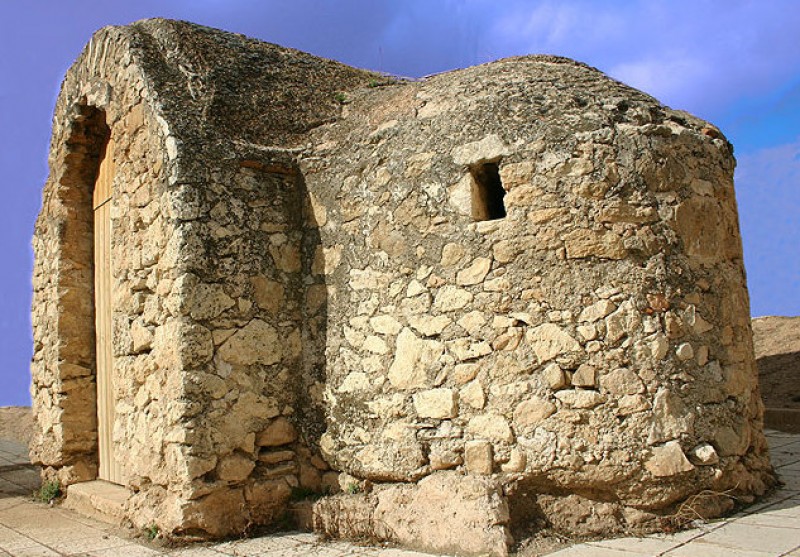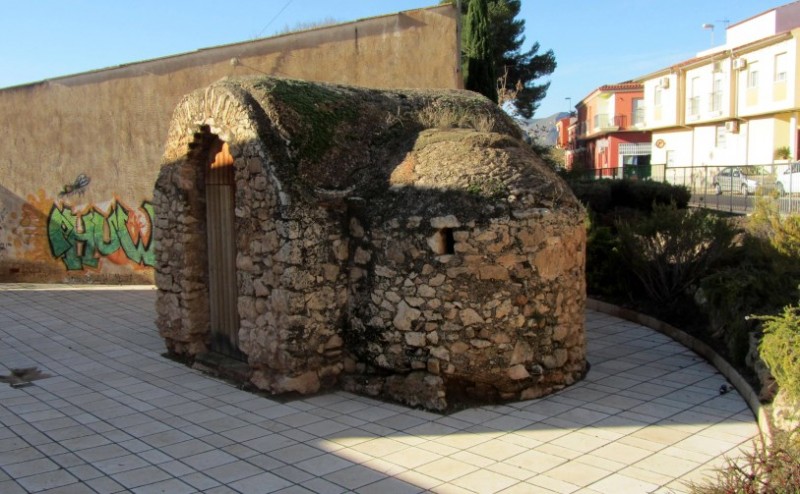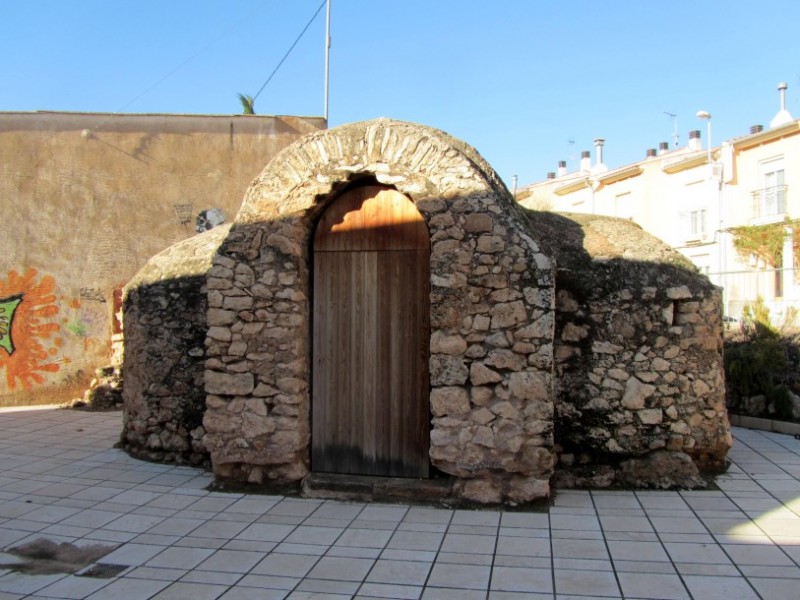
To be listed on the haciendadelalamo TODAY MAP please call +34 968 018 268.
El Casón, a 1600-year-old Roman mausoleum in Jumilla
The building dates from the latter part of the Roman occupation of Spain
One of the most historically interesting buildings in Jumilla is in fact one of the least impressive in architectural terms, and stands in Calle El Casón in the south-western outskirts of the town.
El Casón is very small as buildings go, measuring only just over 3 metres by two metres and reaching a height of no more than 2 metres, but the reason for its importance is that it is at least 1,600 years old. It is in fact a mausoleum dating from the latter part of the Roman occupation of Hispania, and it is believed that it was built as long ago as the late third century AD.

It has to be remembered that when the Romans occupied southern Spain they lived not only in large cities like Cartago Nova (Cartagena), but also in small but important rural communities dedicated to cattle farming and the cultivation of crops. This was the case in the area of Jumilla, where it is known that the Romans cultivated grapes for wine, olives for oil and cereal crops, and the remains of various “villae” (large farmsteads) such as that of Los Cipreses and El Pedregal have been excavated.
The local hierarchies in these communities were dominated by the landowners of the villae, and the importance of one such landowner was such that the “El Casón” mausoleum was built as a burial ground for the mortal remains of members of his family. Made of little more than stones and mortar with wooden doors, these structures usually doubled up as small family chapels, as is the case of the “Martyrium” in La Alberca, close to Murcia, and few have survived the passing of the centuries, but the Casón in Jumilla has miraculously remained intact. This is no doubt due in large part to its unusually sturdy walls, which are almost 50 centimetres thick.
For many centuries there were local legends regarding a secret passage from El Casón to the castle, and perhaps this also contributed to the building surviving for so long.

El Casón is best described as “modest” in architectural terms, but inside there are two small rooms with narrow window openings. The remains of three graves lie under the floor, but unfortunately these were emptied long ago.
It is believed that the Casón formerly belonged to a larger complex of Roman buildings, but the remains of many of these were destroyed by the construction of an esparto grass factory and the Jumilla-Cieza railway line in the early 20th century. Nonetheless excavations nearby have revealed the existence of a Roman bath, and this and other discoveries suggest that it was during this period that the population of the area definitively moved down from the hills and onto the fertile soil of the plain.
Visiting El Casón doesn’t take long - after all, there isn't much to see! - but it is fascinating to stand alongside it and attempt to imagine how life would have been in Jumilla for those whose remains were buried inside centuries before the arrival of the Moors in Spain.
The Casón is located on the southern edge of the built-up area of Jumilla, close to the church of San Agustín.
For more information about visiting Jumilla, including what's on, local news and all of the bodegas on the Jumilla wine route, visit the home page of Jumilla Today.

















